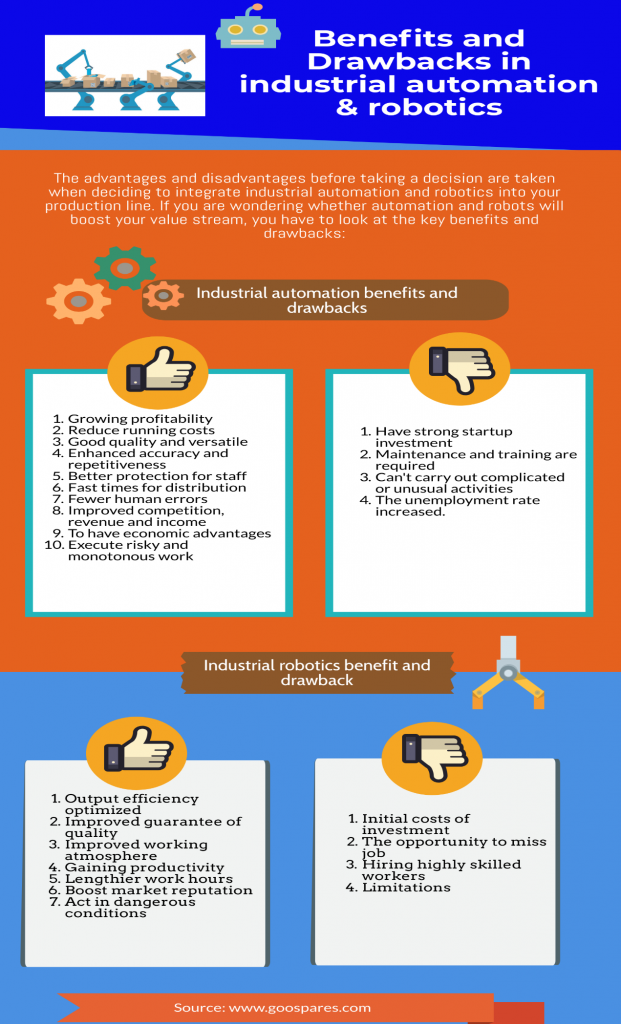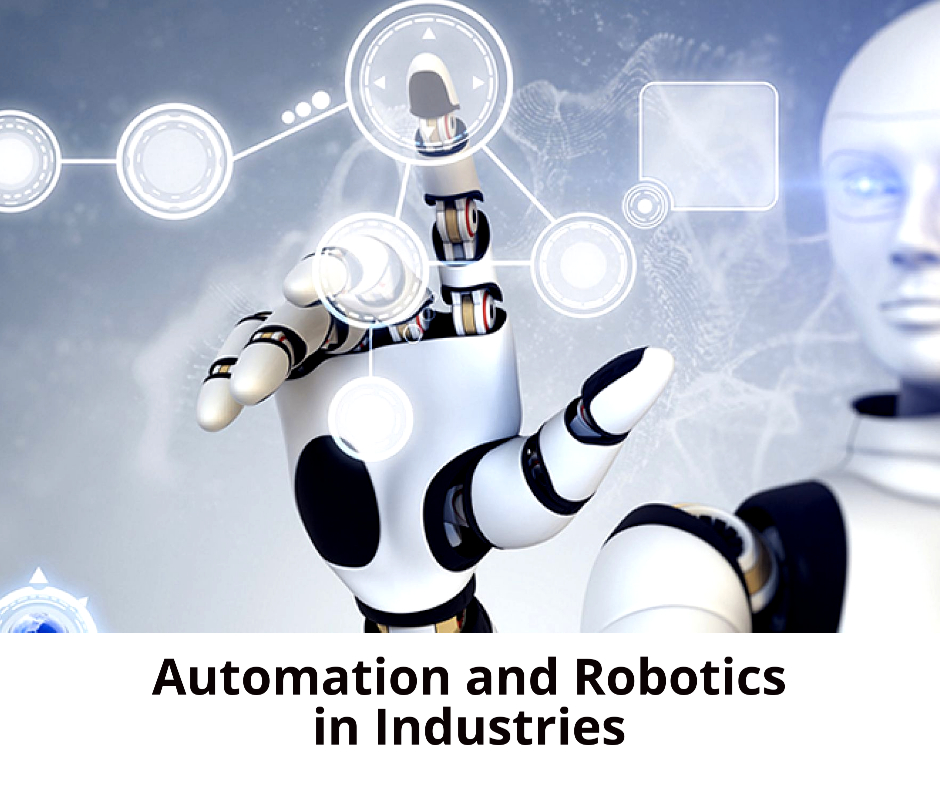When people talk of “automation and robotics,” it generally applies to industrial automation. Industrial automation is concerned with physical process control and management. The second step beyond mechanization in industrialization. It involves the use of physical machinery, and control systems to automate activities within an industrial process. The obvious example is a fully autonomous factory.
Automation was historically aimed at increasing efficiency and reducing the costs of manpower. Today, however, automation focus has moved to enhance manufacturing efficiency and flexibility.
Automation will Change the workplace, but only for the best.
Why industrial automation?
- Automation of factories & processing plants increases output levels by improving quality control.
- The integration of different processes with automated machines in manufacturing decreases cycle times and effort and thereby eliminates the need for human labor.
- The automated control and monitoring of industrial processes at all levels, from the initiation of a product to an end product, will ensure uniformity and product quality with greater conformity.
- The need for manual inspection of various process parameters is absolutely eliminated by automation.
- The level of protection for workers is improved by industrial equipment, replacement of automated machines under hazardous working conditions.
Robotics is a disruptive technology that in the manufacturing sector plays an increasingly important role.
- Robotics increases the overall productivity of a production process through the creation of effective means to complete production tasks. In comparison to humans, robots are not exhausted or can work for days while simultaneously fulfilling the requirements of quality and quantity. Modern industrial robots are capable of adapting during service and taking important decisions.
- Robots are appreciated for several attributes in the manufacturing sector: reliability, predictability, accuracy, repeatability, and impermeability in dangerous environments. When we compare robots with people, they have certain limitations. In contrast to human beings, robots are unable to react to unintended circumstances and to improve performance based on past experience.
- Repetitive and programmable activities include the handling of materials, metal cutting, spot welding, spray painting, and palletization are the current application of industrial automated tools. Robots can be used to produce dramatic outcomes in typical industrial activities.
- Robots are able to provide a wide range of potentially scalable and programmable applications. Sensor technology allows robots to hear, to see, and to feel environmental conditions. These skills are important in quality control and measurement.
In industry, five reasons for using robotics
- The robots used in production to establish efficiencies from the handling of raw materials to the finishing of product packaging.
- Robots for continuous output can be programmed 24/7 in illuminated circumstances.
- Robot equipment is highly versatile and even complex tasks can be modified.
- With robots being used more than ever today, manufacturers need to take on automation to remain competitive.
- Automation for most businesses, including small shops, can be extremely cost-effective.









